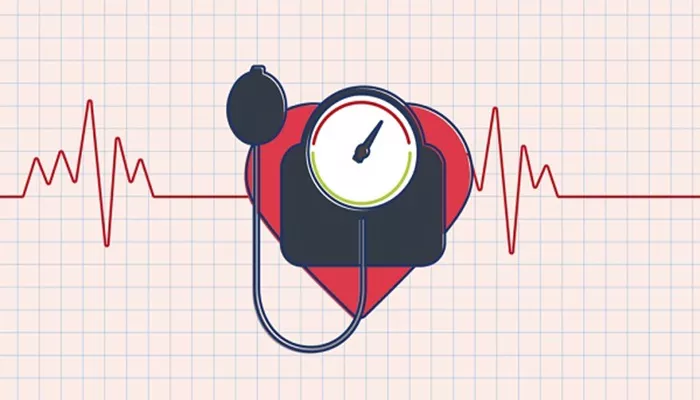Hypertension, commonly known as high blood pressure, is a prevalent condition affecting millions globally. It poses significant health risks, including cardiovascular diseases, stroke, and kidney failure.
Traditional management strategies have primarily focused on pharmacological interventions; however, lifestyle modifications, particularly exercise, have gained recognition for their role in managing hypertension. Among various forms of exercise, resistance training has emerged as a promising non-pharmacological approach to lower blood pressure. This article explores the relationship between resistance training and blood pressure reduction, examining the underlying mechanisms, effectiveness, and practical recommendations for implementation.
Understanding Hypertension
Hypertension is characterized by elevated blood pressure levels, typically defined as a systolic blood pressure (SBP) of 130 mm Hg or higher and/or a diastolic blood pressure (DBP) of 80 mm Hg or higher. The condition can be categorized into primary (essential) hypertension, which has no identifiable cause, and secondary hypertension, which results from underlying health issues. Effective management of hypertension is crucial to prevent complications such as heart disease and stroke.
The Role of Exercise in Managing Hypertension
Exercise is widely recognized for its cardiovascular benefits. Aerobic activities like walking, running, and cycling have traditionally been recommended for lowering blood pressure. However, recent research highlights the potential of resistance training as an effective alternative or complement to aerobic exercise in managing hypertension.
Mechanisms Behind Resistance Training And Blood Pressure Reduction
Resistance training involves exercises that improve muscle strength and endurance through the use of weights or resistance bands. The mechanisms by which resistance training may lower blood pressure include:
Reduction in Peripheral Resistance: Resistance training can enhance vascular function and reduce peripheral resistance in the arteries, leading to lower blood pressure levels.
Improvement in Endothelial Function: Regular strength training may improve endothelial function by increasing nitric oxide production, which helps dilate blood vessels.
Hormonal Changes: Resistance training can influence hormone levels that regulate blood pressure, including reductions in cortisol and increases in growth hormone.
Weight Management: Strength training aids in weight loss and body composition improvements, both of which are beneficial for controlling blood pressure.
see also: Is Trazodone Safe for Heart Patients?
Evidence Supporting Resistance Training for Blood Pressure Reduction
Several studies have investigated the effects of resistance training on blood pressure. A meta-analysis involving randomized controlled trials (RCTs) provides compelling evidence that resistance training significantly reduces both SBP and DBP in individuals with prehypertension and hypertension.
Study Findings: One meta-analysis reported that resistance training alone led to an average reduction of 8.2 mm Hg in SBP and 4.1 mm Hg in DBP among hypertensive subjects. These findings support the use of resistance training as a viable intervention for managing high blood pressure.
Training Protocols: The most effective resistance training protocols typically involve moderate to vigorous intensity exercises performed at least twice a week over a minimum duration of eight weeks. Studies indicate that the greatest reductions in blood pressure occur when participants engage in progressive strength training that includes multiple sets and repetitions.
Age Considerations: Research indicates that younger individuals (under 59 years) experience more significant reductions in blood pressure compared to older adults. However, even elderly individuals can benefit from resistance training when appropriately tailored to their capabilities.
Long-Term Benefits: Notably, the benefits of resistance training on blood pressure may persist even after cessation of exercise. Some studies have shown that participants maintained lower blood pressure levels for up to 14 weeks after stopping their strength training regimen.
Practical Recommendations for Implementing Resistance Training
To effectively incorporate resistance training into a hypertension management plan, consider the following guidelines:
Consultation with Healthcare Providers: Individuals with hypertension should consult their healthcare providers before starting any new exercise program to ensure safety and appropriateness.
Training Frequency: Aim for at least two sessions per week focusing on major muscle groups. Each session should include 2-4 sets of 8-12 repetitions at moderate to vigorous intensity.
Progressive Overload: Gradually increase the weight or resistance used in exercises to continue challenging the muscles and promoting adaptations.
Monitor Blood Pressure: Regularly monitor blood pressure before and after workouts to assess individual responses to exercise and adjust programs accordingly.
Combine with Aerobic Exercise: While resistance training is beneficial, combining it with aerobic exercises can provide additional cardiovascular benefits.
Conclusion
Resistance training has emerged as an effective strategy for lowering blood pressure among individuals with hypertension.
The evidence supports its incorporation into lifestyle modification plans aimed at managing high blood pressure without solely relying on medication. As healthcare professionals continue to recognize the importance of exercise in hypertension management, strength training should be promoted as a valuable tool alongside traditional aerobic activities.
Related topics:


